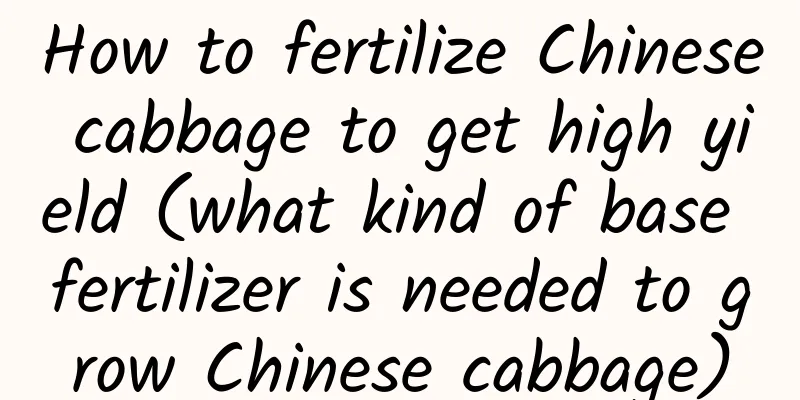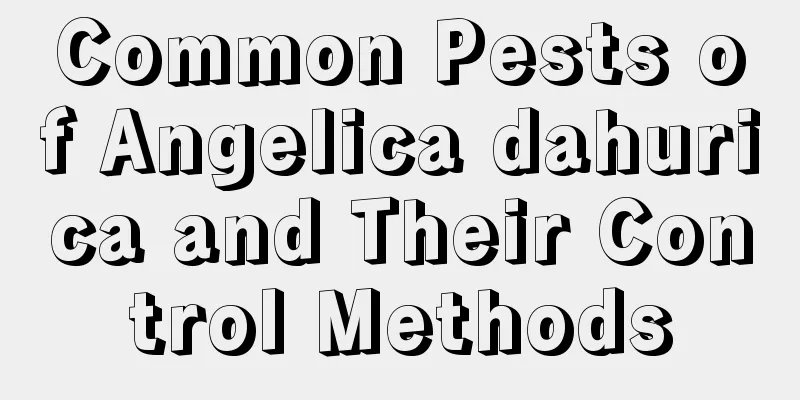Chrysanthemum planting technology and cultivation management

|
Chrysanthemum belongs to the Asteraceae family and is a perennial herb. It not only has ornamental value, but also can be used as medicine. Nowadays, many people like to drink chrysanthemum tea. Chrysanthemums adapt to warm climates and plenty of sunlight. They are cold-resistant but not drought-resistant. As a short-day plant, chrysanthemum can bloom early under short-day conditions. The growth cycle of chrysanthemum includes germination in spring, vegetative growth in summer, flowering in autumn, and hibernation underground in winter. The suitable temperature range for its growth is 18℃ to 21℃, the highest temperature it can withstand is 32℃ and the lowest temperature it can withstand is 10℃. Let’s learn about chrysanthemum planting techniques and cultivation management. 1. Site selection and land preparation Chrysanthemums do not have high requirements for soil, but they are not suitable for planting in waterlogged or heavily saline-alkali land . After selecting the site, careful land preparation is required to ensure a good harvest. First, deep plow the soil to a depth of 20-25 cm, combine it with land preparation, and apply 2000-2500 kg of compost or rotted manure per mu as base fertilizer. The land is then leveled and harrowed, raised ridges 120-130 cm wide are made, and drainage ditches are set around the plots. 2. Breeding method Propagation by division: After picking chrysanthemums in November, cut off the stems, dig out the roots and plant them in the field, apply soil and fertilizer and keep warm over the winter. In the spring of the second year, water with manure before budding. Around the Grain Rain, when the seedlings grow to about 15 cm, pull out the seedlings and divide them into several plants. Plant them immediately and water them to take root. The general transplanting time is no later than mid-May. Cutting seedlings: Cuttings are carried out in April-May or June-August. Cut the branches in the middle, keeping the upper part, and cut them into 20 cm lengths. Keep one leaf bud on each branch and the terminal bud on the top part. After treating with plant hormones, carry out cuttings, with a spacing of 6-7 cm between plants, press firmly and water sufficiently. It will take root after 20 days, and water it with manure after it takes root. 3. Field management Intertillage weeding: Before the chrysanthemum buds appear, weeding is generally carried out 4-5 times, preferably shallow rather than deep. Till the soil every two months and add soil to prevent lodging. Top dressing: Chrysanthemum likes fertilizer. In addition to base fertilizer, top dressing is also needed during the growing period, generally three times. The first time is after transplanting and greening, apply 10-15 kg of urea per mu to promote seedling development; the second time is when the plants are branching; the third time is during the budding period, the amount of fertilizer should not be too large, and it should be the same as the first time. Picking buds: Picking buds can increase chrysanthemum yield. In late May, when the seedlings are 25 cm tall, choose a sunny day to pinch off the top 1-2 cm, and then pinch off the top every half a month. Stop after mid-to-late July to avoid malnutrition caused by excessive branches, which will affect yield and quality. 4. Pest and disease control Root rot: The roots rot and the leaves turn yellow and wither. Prevention and control methods : appropriate irrigation, drainage during floods and irrigation during droughts, and loosening the soil. Leaf spot: Leaves initially develop yellow and dark brown spots. Prevention and control methods: Avoid applying too much nitrogen fertilizer, pay attention to drainage and ventilation, and remove diseased leaves in time. You can use 500 times diluted 80% wettable mancozeb or 1% Bordeaux mixture for prevention and control. Spray 2-3 times a month before the disease occurs, and spray once every 7 days when the disease occurs. Downy mildew: caused by fungi, mainly harms leaves. Prevention and control methods: In the early stage of the disease, spray 800-1000 times diluted 60% cypermethrin wettable powder and 500 times diluted 65% mancozeb wettable powder. Drainage should be carried out in time during the rainy season. It is not suitable for continuous cropping, but rotation with cereal crops for more than 3 years can be implemented. 5. Harvesting and processing It is usually harvested between the Frost Descent and the Beginning of Winter. The branches of white chrysanthemums (including Haoju, Huaiju and Sichuanju) need to be broken off, tied into small bundles, hung upside down to dry in the shade, and then the head inflorescences are cut off before being sorted, packaged and put on the market. The above is an introduction to the key points of chrysanthemum planting technology and cultivation management. Friends who grow chrysanthemums can consider these issues and do them well.
|
>>: How to keep potted honeysuckle alive in winter? Are you afraid of freezing?
Recommend
What is the best month to plant yam?
When to plant yam The sowing time of yam is gener...
What to do if Silver Queen leaves turn yellow
1. Reasons Overwatering Excessive watering will c...
Plants are afraid of the cold, so is it enough to just bring them indoors?
Do your plants hate the cold? Common home-grown f...
What is the best fertilizer for Camellia chrysantha
Fertilization time for Camellia chrysantha Camell...
How to water the Teyulian?
Do not overwater Since the water content in the b...
How to prune lilies
When to prune lilies When caring for lilies, if y...
How to grow five-needle pine
1. Soil To grow five-needle pine, you need loose,...
Can cigarette ash be used as fertilizer for growing flowers?
1. Can it be used as fertilizer to grow flowers? ...
How to grow a cactus to make it big and round (how to grow a new cactus to make it grow more vigorous)
The cactus plant is not big and is suitable for g...
How to dwarf lilies
Bulb selection and processing It is usually plant...
How to make garlic grow bigger (what medicine can make garlic swell)
At present, the most commonly used growth enhance...
How many years does Shatin bear fruit?
Introduction to Pomelo Planting Pomelo prefers a ...
How to hydroponically cultivate Monstera? Can it survive hydroponically?
1. How to carry out hydroponics 1. Plant processi...
What to do if the red maple leaves wither
Causes of withering The first step in dealing wit...
How to propagate boxwood and what to pay attention to
Boxwood propagation method The common propagation...









